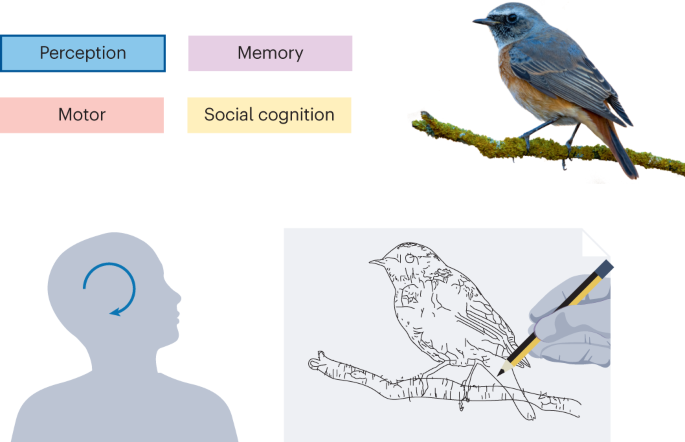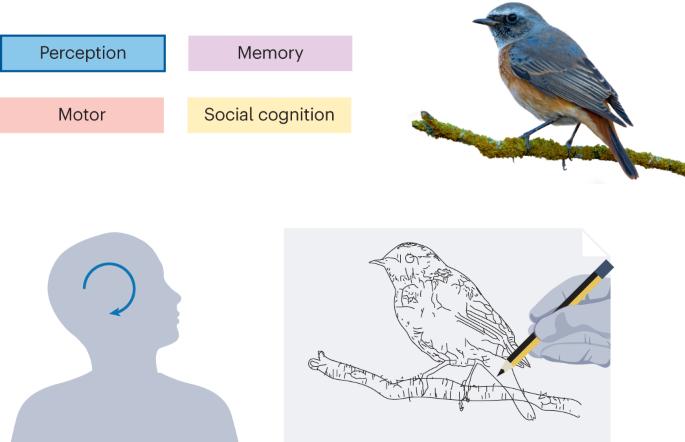Drawing as a versatile cognitive tool
IF 16.8
Q1 PSYCHOLOGY, MULTIDISCIPLINARY
引用次数: 0
Abstract
Drawing is a cognitive tool that makes the invisible contents of mental life visible. Humans use this tool to produce a remarkable variety of pictures, from realistic portraits to schematic diagrams. Despite this variety and the prevalence of drawn images, the psychological mechanisms that enable drawings to be so versatile have yet to be fully explored. In this Review, we synthesize contemporary work in multiple areas of psychology, computer science and neuroscience that examines the cognitive processes involved in drawing production and comprehension. This body of findings suggests that the balance of contributions from perception, memory and social inference during drawing production varies depending on the situation, resulting in some drawings that are more realistic and other drawings that are more abstract. We also consider the use of drawings as a research tool for investigating various aspects of cognition, as well as the role that drawing has in facilitating learning and communication. Taken together, information about how drawings are used in different contexts illuminates the central role of visually grounded abstractions in human thought and behaviour. Drawing is a versatile tool that people use to convey visual information across contexts. In this Review, Fan and colleagues discuss the cognitive mechanisms of drawing and key considerations for the use of drawings as a research tool.


绘画是一种万能的认知工具
绘画是一种认知工具,它让精神生活中不可见的内容变得可见。人类利用这种工具绘制出了各种各样的图画,从逼真的肖像到示意图,不一而足。尽管绘画图像种类繁多且普遍存在,但使绘画如此多才多艺的心理机制仍有待充分探索。在这篇综述中,我们综合了心理学、计算机科学和神经科学等多个领域的当代研究成果,探讨了绘画制作和理解所涉及的认知过程。这些研究结果表明,在绘画创作过程中,感知、记忆和社会推理所起的平衡作用会因情况的不同而有所变化,从而导致一些绘画作品更加逼真,而另一些绘画作品则更加抽象。我们还考虑了利用绘画作为研究工具来调查认知的各个方面,以及绘画在促进学习和交流方面的作用。总之,有关在不同环境中如何使用图画的信息揭示了以视觉为基础的抽象在人类思维和行为中的核心作用。绘画是一种多用途工具,人们用它在不同的情境中传递视觉信息。在这篇综述中,Fan 及其同事讨论了绘画的认知机制以及将绘画作为研究工具的主要注意事项。
本文章由计算机程序翻译,如有差异,请以英文原文为准。
求助全文
约1分钟内获得全文
求助全文

 求助内容:
求助内容: 应助结果提醒方式:
应助结果提醒方式:


